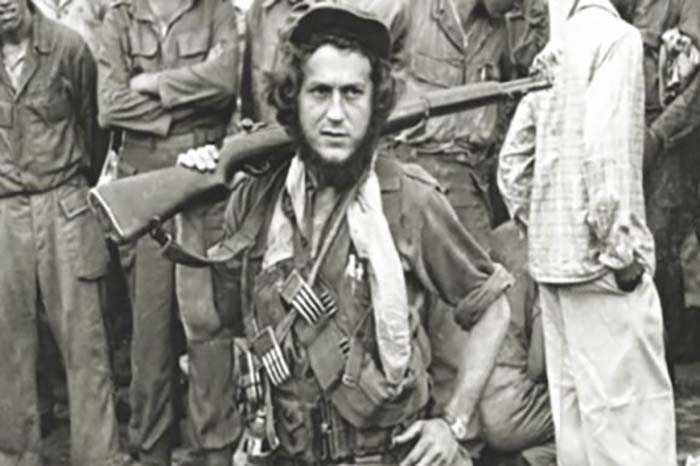
On December 30, 1958, almost on the verge of the longed-for victory, the young rebel captain Roberto Rodriguez Fernandez, known among his comrades as El Vaquerito [Little Cowboy] fell in combat during the Battle of Santa Clara, led by Ernesto Che Guevara.
The teenage-looking 23-year-old combatant was carrying out the order of assaulting the Police Station of the capital city of the former province of Las Villas with 24 rebel troops who were no less brave.
The death of the hero who resembled a helpless little boy but boasted huge moral fortitude came as a blow to his men and especially to Guevara, who dropped one of his categorical phrases when he learned the unfortunate news: “They have killed 100 of my men”, words revealing of the extent of his pain.
It is said that 300 of the tyrant’s soldiers armed to the teeth and backed up by tanks and airplanes had been waiting in the place where he fought his final battle. However, El Vaquerito was nothing if not a courageous, very creative and fearless fighter used to coping with hairy situations and taking “impossible missions”.
He did his thing again, moving from one house to the next through holes in the walls until he reached a roof about 50 meters from the police station, from where he was shoot at the soldiers with his Garand rifle, standing upright and exposed to the enemy’s bullets, which finally hit him. He was quickly taken to the command headquarters, where he died.
He was not a madman, but a Cuban anointed and urged by the love for freedom, justice and the homeland, like so many others throughout time.
When Captain Roberto Rodriguez fell, he was chief of the famous Suicide Squad—subordinate to Che's command—a fact revealing of the extraordinary skills and revolutionary spirit of this man who had joined the Rebel Army in April 1957 when it was still being assembled in the Sierra Maestra mountains.
Because of his physique, he was accepted at first only as a messenger, and not before he discussed his reasons directly with Fidel Castro himself. No one in the force believed that he would be of any use, but then again, appearances are deceiving, as the saying goes.
Soon he joined the José Martí Column 1 and, in the summer of 1958, he volunteered to participate in the Invasion led by commanders Camilo Cienfuegos and Ernesto Guevara to extend the struggle across Cuba. Under the latter's orders, he was appointed leader of a sort of elite unit that went down in history as the Suicide Squad, tasked with the most dangerous actions and in which ranks he excelled.
El Vaquerito’s death on the eve of the new January has been since a sad memory, for he was an inspiring and vital force in times when the Cubans are called to display their heroism and unrestrained dedication at the service of their Homeland, as he did.
He had earned his nickname because when he joined the Rebel Army, barefoot and thirsty for justice, a moved Celia Sanchez gave him a pair of colorful Mexican boots, a plaid shirt and a kind of Texan hat, an outfit that made him look like a quirky cowboy from the West.
Born on July 7, 1935 in the former province of Las Villas, Roberto worked at the bar of a boarding house after he decided to leave his very poor home when he was 11. Then he took many low-paid jobs, working as a milk delivery boy, a longshoreman, a typographer's assistant, a street vendor, a boxer, and a magician.
The beloved hero, who is a symbol of unrestrained bravery, was buried in the town of Placetas, already liberated by the Rebel Army, where a monument was built in his honor.
Since 2009, his remains lie in the Mausoleum of the Guerrilla Front of Las Villas, near the memorial that honors Che Guevara and other martyrs in the city of Santa Clara.










Nos reservamos el derecho de no publicar los comentario que incumplan con las normas de este sitio